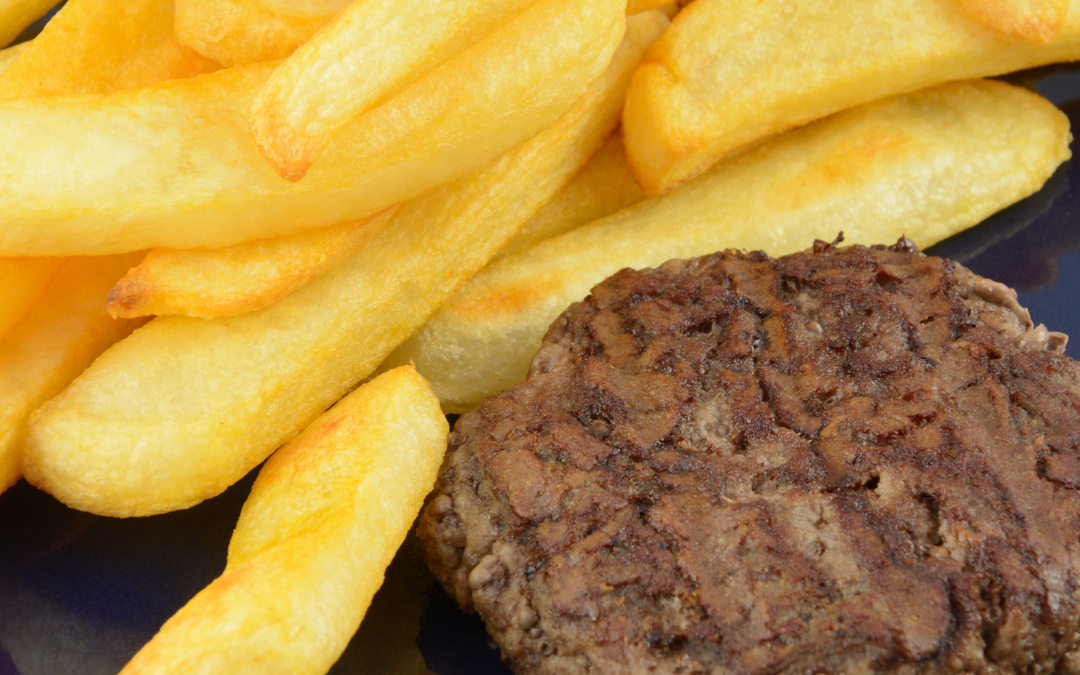Inflammation refers to your body’s response against things that can harm it, such as infections, injuries, and toxins. The body responds with inflammation in order to protect itself so it can repair injuries and fight invaders, such as bacteria and viruses.
Think of inflammation as the body’s natural response to protect itself against harm. It’s a big part of how our body recovers after facing disease or injury.
This response includes the release of antibodies and proteins, as well as increased blood flow to the damaged area. The whole process usually lasts for a few hours or days in the case of acute inflammation.
There are two types of inflammation: acute and chronic.
Acute inflammation
You are probably more familiar with acute inflammation as it occurs when you cut your finger, bang your head, or injure some other part of the body. The immune system sends its army of white blood cells to surround and protect the area. It creates redness and swelling.
Chronic inflammation
Chronic inflammation happens when an inflammation response lingers, leaving your body in a constant state of alert. Over time, chronic inflammation may start damaging healthy cells, tissues, and organs.
While inflammation is a natural part of the healing process, if it becomes chronic it’s important to get it under control to reduce the potential risk of long-term damage.
Symptoms of inflammation
- Redness
- Swollen joint that is sometimes warm to the touch
- Joint pain
- Loss of joint function
- Fever
- Chills
- Fatigue & loss of energy
- Headaches
- Muscle stiffness
- Abdominal cramps and pain
- Skin conditions, such as psoriasis and eczema.
How does diet impact chronic inflammation?
There can be numerous triggers of inflammation in the body, with the foods and beverages a person consumes having a primary impact on how inflamed their body is.
What you eat can play both a positive and negative role in managing chronic inflammation.
7 foods and drinks to avoid
The following foods and drinks have been shown to increase inflammation in the body:
- Refined carbohydrates, such as white bread, pasta, cakes and pastries, cookies, particularly those containing wheat/gluten
- Fried foods, such as French fries
- Processed meat, such as hot dogs, sausage, bacon, and lunch meats
- Red meat, such as burgers and steaks
- Margarine
- Foods and beverages high in sugar, such as sodas, ice cream, and candy
- Alcohol.
Food allergies
Eating foods you are allergic to can result in inflammation. Some people have a major, noticeable reaction to particular foods. This makes it easier to recognize a food allergy.
Other people just experience vague symptoms or discomfort, and this makes it hard to recognize a direct link between a particular food and the distress it causes to the body. This can cause a lot of food allergies to go unchecked for long periods of time.
Grains, and particularly wheat, are a common allergen for many people. Dairy and nuts can also cause issues. So, if you suspect you have a food allergy, these foods are some of the first to suspect could be causing an issue.
If you notice a non-optimum reaction after eating any food, this may indicate you have a food allergy. Avoid any foods you feel don’t agree with you.
Foods to eat to minimize chronic inflammation
A variety of foods have anti-inflammatory properties. These include foods that are high in antioxidants and polyphenols.
What are antioxidants?
Oxidative stress is an imbalance between damaging free radicals and antioxidants in a body. Free radicals are oxygen-containing molecules with an uneven number of electrons. The uneven number allows them to easily react with other molecules. Free radicals can cause large chain chemical reactions in the body because they react so easily with other molecules.
When there are more free radicals present than can be kept in balance by antioxidants, the free radicals can start doing damage to fatty tissue, DNA, and proteins in the body. Proteins, lipids, and DNA make up a large part of the body, so that damage can lead to a vast number of diseases over time, including neurodegenerative diseases and inflammatory diseases.
Antioxidants are molecules that can donate an electron to a free radical without making themselves unstable. This causes the free radical to stabilize and become less reactive.
What are polyphenols?
Polyphenols are natural substances high in antioxidant properties, which can neutralize harmful free radicals that would otherwise damage cells.
Foods that can help reduce inflammation
- Green vegetables, such as broccoli, kale and spinach. Green vegetables are high in antioxidant compounds, and these will help lower inflammation
- Fatty fish, such as salmon, sardines, and mackerel are a great source of proteins and omega-3 fatty acids. When broken down in the body, these fatty acids can have an anti-inflammatory effect.
- Berries, such as blueberries, raspberries, blackberries and strawberries. Berries contain antioxidants called anthocyanins and these compounds can have an anti-inflammatory effect
- Green tea is considered a very healthy drink because of its high antioxidant and anti-inflammatory properties due to epigallocatechin-3-gallate (EGCG).
- Extra virgin olive oil is considered one of the healthiest fats you can consume. It’s rich in monounsaturated fats which provide numerous health benefits. Oleocanthal, an antioxidant found in olive oil, has been shown to have anti-inflammatory properties. Extra virgin olive oil is rich in polyphenols, including hydroxytyrosol, the most potent natural antioxidant discovered to date. 68,576 is the ORAC value (Oxygen Radical Absorbance Capacity) of hydroxytyrosol, 15 times higher than that of green tea. Scientists recognize its potent anti-inflammatory and antioxidant properties.
If you feel inflammation is an issue for you, most definitely make changes to your diet. Remove foods that are known to cause inflammation and add more foods with anti-inflammatory properties.
For many people, removing every food that can cause inflammation is an overwhelming prospect. If you feel this way, then start by removing one or two of the inflammatory foods and replace these with more vegetables and other anti-inflammatory foods. When you have adapted to this change, then remove another one or two of the foods that can cause inflammation. In this way, you’ll be steadily increasing the amount of anti-inflammatory foods in your diet and you should notice a difference in how you feel.

